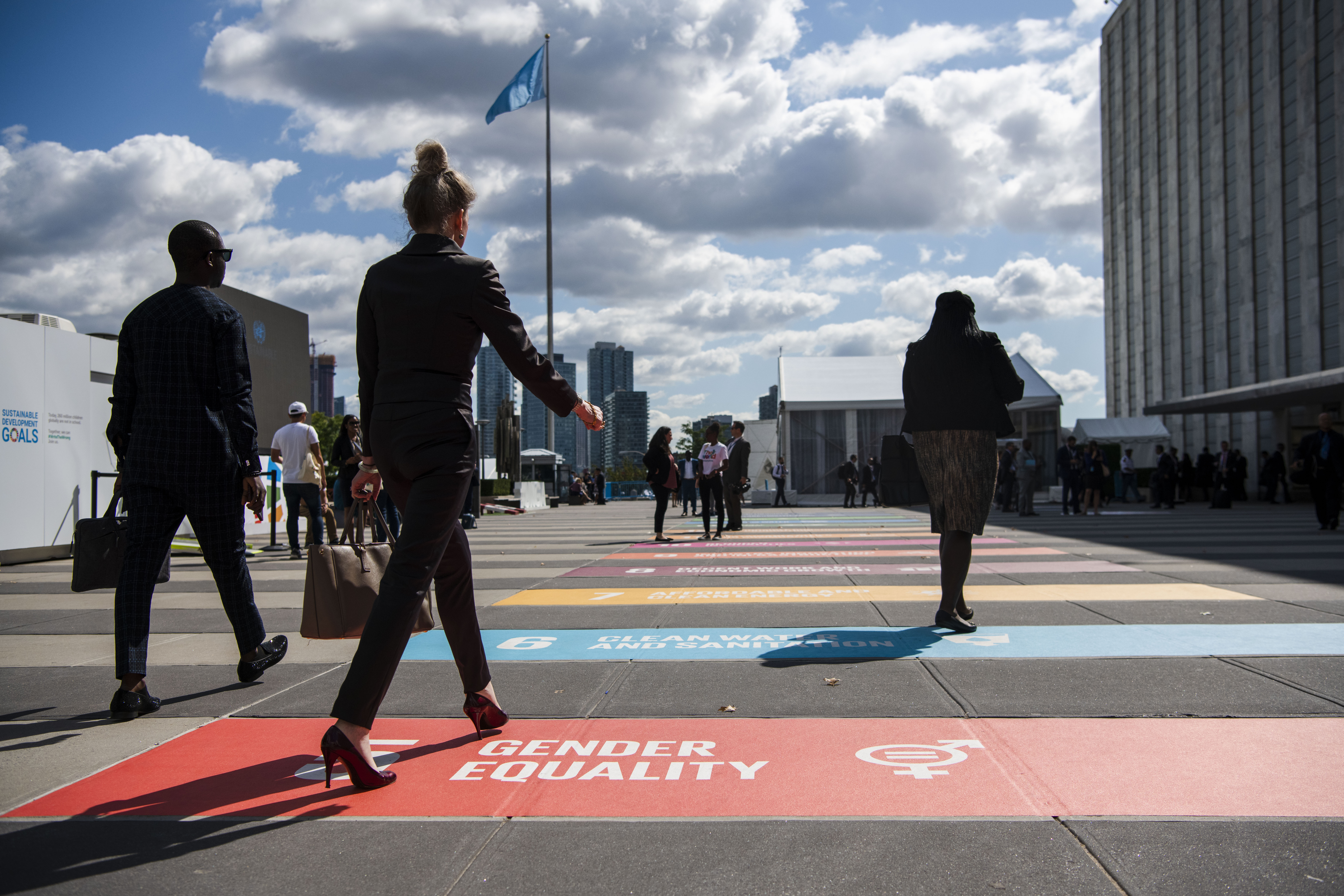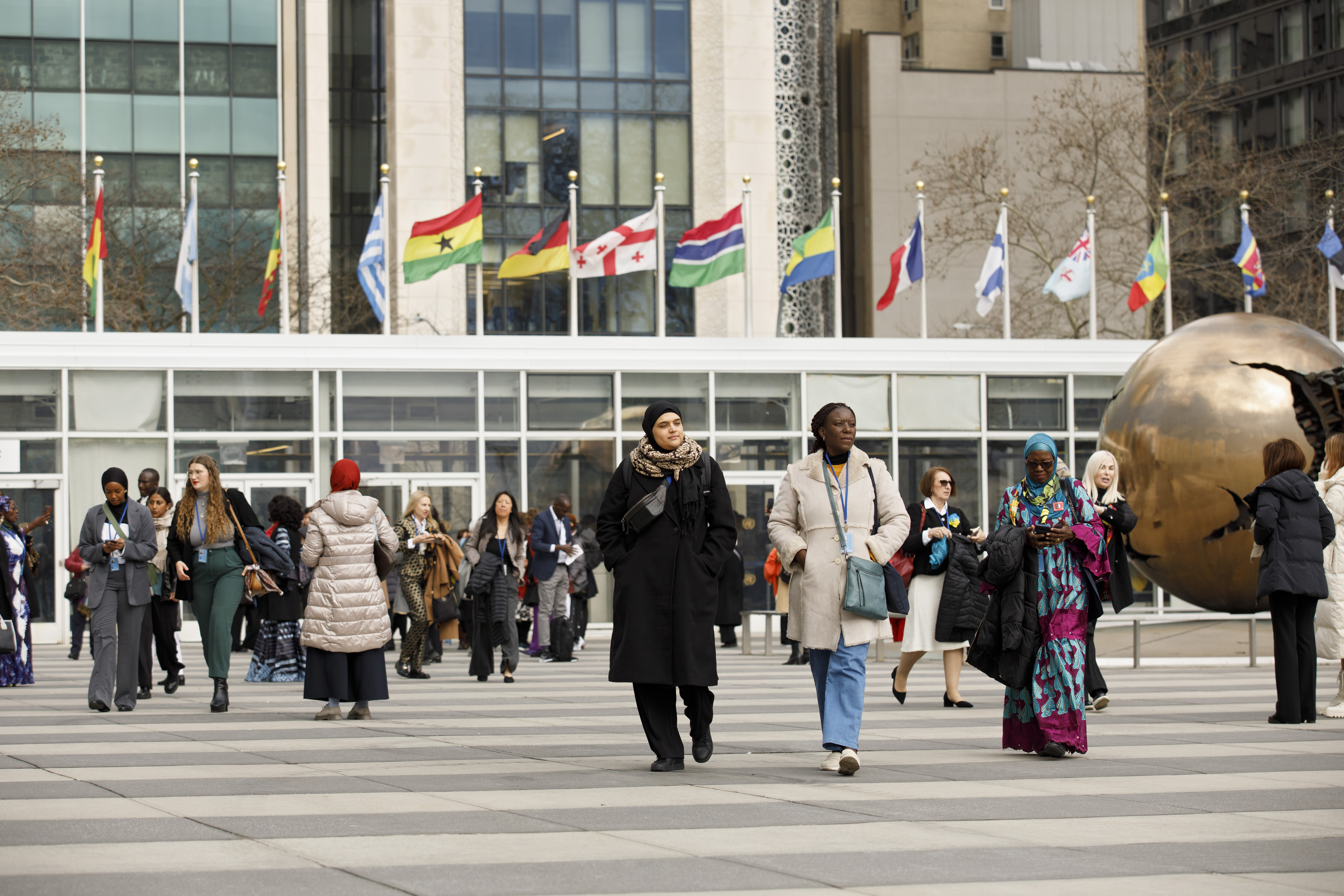Financial reform can bring more money for SDG implementation
The world is at a crossroads as progress on SDGs falters. A drastic but necessary overhaul of the credit rating system could help.
 UN Deputy Secretary-General Amina Mohammed has warned the world is at a crossroads when it comes to meeting the 2030 targets. : European Commission/United Nations Regional Information Centre, Flickr CC BY 2.0 (https://creativecommons.org/licenses/by/2.0/)
UN Deputy Secretary-General Amina Mohammed has warned the world is at a crossroads when it comes to meeting the 2030 targets. : European Commission/United Nations Regional Information Centre, Flickr CC BY 2.0 (https://creativecommons.org/licenses/by/2.0/)
The world is at a crossroads as progress on SDGs falters. A drastic but necessary overhaul of the credit rating system could help.
“We are truly at a crossroads and time is running out,” began the warning from United Nations Deputy Secretary-General Amina Mohammed in April 2024. “Without adequate financing, the 2030 targets cannot be met.”
Nearly halfway through the UN’s 2030 Agenda, the Sustainable Development Goals (SDGs) are off track and facing financing challenges that require urgent attention.
According to a 2024 report from the Sustainable Development Solutions Network, on average only 16 percent of SDG targets are on track, while the remaining 84 percent show either limited progress or are in reverse.
In terms of SDG performance, poorer and more vulnerable countries lag far behind . Data on the SDG Index shows the gap between the world’s average SDG performance and that of the poor and most vulnerable countries has widened since 2015.
Financing failures are at the heart of this sustainable development crisis.
Indeed, the global financial architecture isn’t providing resources at the pace and scale needed to meet the 2030 Agenda, preventing developing economies from properly investing in sustainable development.
Targets not met
External concessional finance is inadequate, limited and unevenly distributed. In 2023, only five Development Assistance Committee donor countries met the UN target of providing 0.7 percent of gross national income as official development assistance.
Only two countries in 2022 (Luxembourg and Sweden) met that target and the additional goal of providing 0.15-0.20 percent of gross national income to least developed countries. Compared to other country groups, highly vulnerable countries such as small island developing states receive little official development assistance.
These flows are unevenly spread across small island developing states, often neglecting critical sectors such as ocean-based industries and ecosystems.
In global capital markets, developing economies cannot borrow at acceptable terms. Data shows that no low-income country has an investment grade rating, compared to less than 6 percent of lower-middle-income countries and 75 percent of high-income countries.
Due to their lack of creditworthiness, these countries face earlier due dates on debts and borrowing costs, which are much higher than those of developed countries.
A recent UN Trade and Development report shows developing countries borrow at rates that are two to four times higher than those of the United States and six to 12 times higher than those of Germany.
Increasing debt burdens, high inflation and rising geopolitical uncertainty exacerbate this situation by further deteriorating investors’ risk appetite and tightening financing terms. Because of the failure of global financing, SDG financing gaps in developing countries are large and growing.
Financing gap
Currently, the gap is estimated between $US2.5 trillion and $US4 trillion annually.
The least developed countries and low income countries are those experiencing the most significant gaps as a share of gross domestic product, which amount to 15 percent and 30 percent of their respective GDP.
An ambitious reform of the global financing architecture is needed to scale up public and private financial resources for sustainable development in poor and vulnerable countries.
Multilateral development banks, such as the World Bank and the International Monetary Fund, can play a key role in providing countercyclical, affordable and long-term financing that increases during difficult patches, but they too need to be more effective and have their financing capacity enhanced.
Multilateral development banks’ paid-in capital bases — capital paid-in by member country governments as shareholders — could be increased in line with the growing investment needs.
The existing eligibility criteria to access concessional finance, which are based solely on income-level metrics, fail to capture other important aspects such as vulnerability. Reforming this would help allocate resources to countries most in need more efficiently.
The ideas promoted by the UN of developing a Beyond GDP Framework and using the Multidimensional Vulnerability Index to complement income-level metrics in defining the allocation of concessional finance represent an important step forward.
However, several hurdles need to be cleared to put these ideas into practice, such as getting strong political commitment, global consensus and developing a stronger data architecture.
In addition to scaling up their resources, multilateral development banks could focus on enhancing their development impact.
Banks can target priority areas of investment with the highest impact on sustainable development, improve the coordination of aid and make better use of private sector instruments, such as guarantees, to leverage more investments from the private sector.
Next to concessional lending, financial resources from the private sector can also play a vital role in financing sustainable development.
Reforms needed
But improvements and reforms to private funding are necessary to help the 2030 Agenda.
First, private investments should be better aligned with the SDGs through improved national planning, regulation, reporting and oversight.
Second, the short-term thinking of private investors in search of short-term gains should be reconciled with the need of poor and vulnerable countries to finance long-term SDG investments in physical infrastructure and human capital.
To do this, the credit rating system should be overhauled.
Instead of focusing exclusively on short-term risks, credit rating methodologies should consider countries’ long-term growth potential and the positive spillovers that may arise from investment in sustainable development.
Only in this way, highly vulnerable countries such as small island developing states can succeed in changing the perception of risks of private investors and obtain better investment-grade ratings and improved financing terms.
Third, a greater use of innovative financing mechanisms tailored to country-specific needs and vulnerabilities (for example, sustainable bonds, public-private partnerships, insurance mechanisms) could also be promoted by private actors to finance sustainable development projects.
In addition to, and to complement the above reforms, there could be a global effort to rethink the principles of the international debt architecture and the mechanisms to restructure existing debts, especially in highly indebted economies such as small island developing states.
The use for the most vulnerable of debt standstill, targeted debt relief or innovative financing mechanisms, such as debt swaps, should be promoted to support countries to free up resources for sustainable development.
But this should happen by ensuring that the reputation of countries’ financial markets are not damaged and that their sovereign ratings are not compromised. This requires better coordination between official and commercial creditors, as well as increased engagement by indebted countries in efforts to stabilise their economies and promote sustainable development.
The UN Summit of the Future in September is a critical opportunity for countries to commit to work together effectively to reform the global financial architecture and make it fit for sustainable development.
Closing the development financing gaps is crucial to change course for achieving the SDGs and laying the foundations for a more resilient future.
Isabella Massa is Senior Manager at the UN Sustainable Development Solutions Network (SDSN), where she leads the work on SDG financing and vulnerability. Previously, she worked at the Overseas Development Institute (ODI) and International Monetary Fund (IMF) and as an independent consultant for several international organisations.
Originally published under Creative Commons by 360info™.













